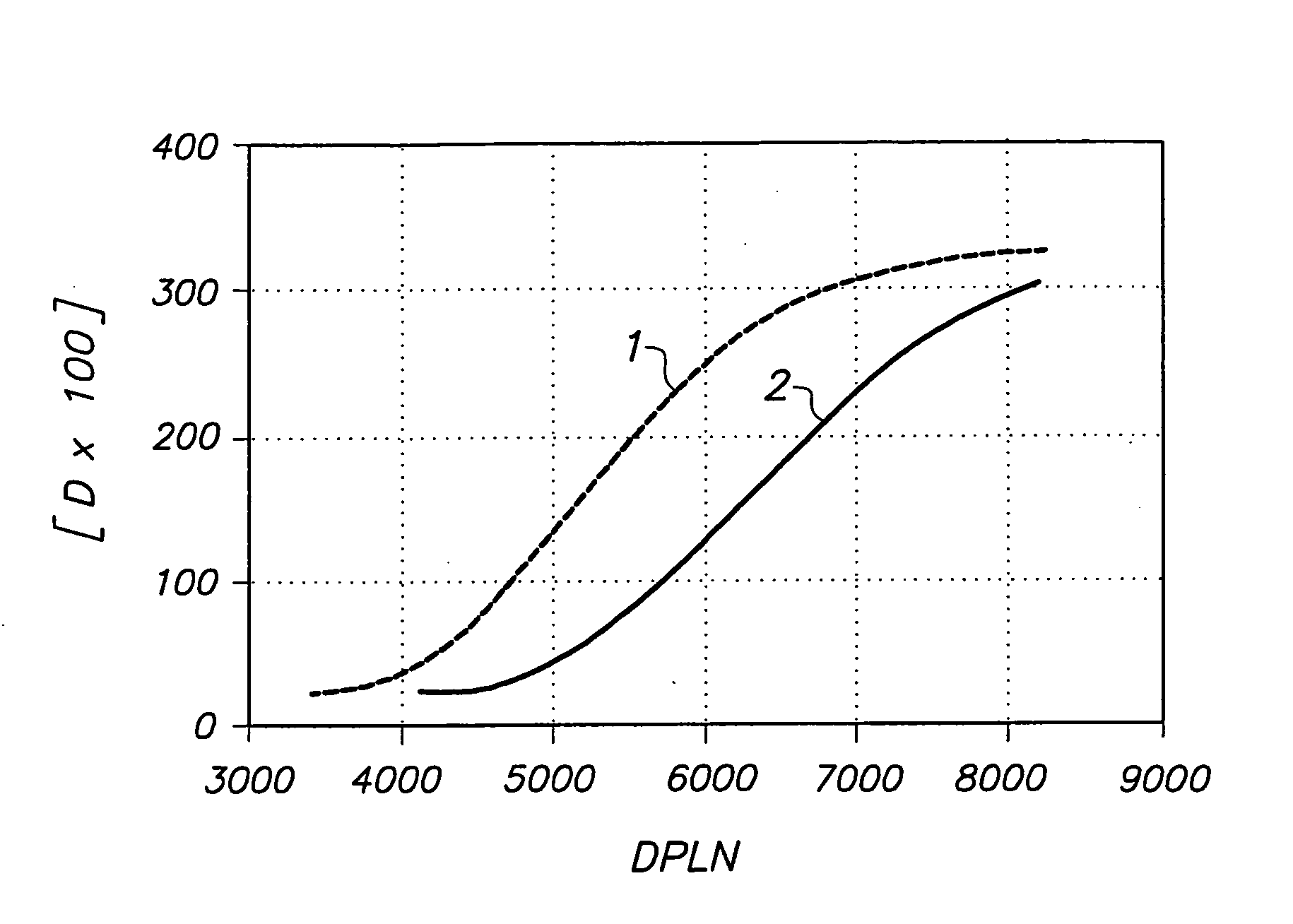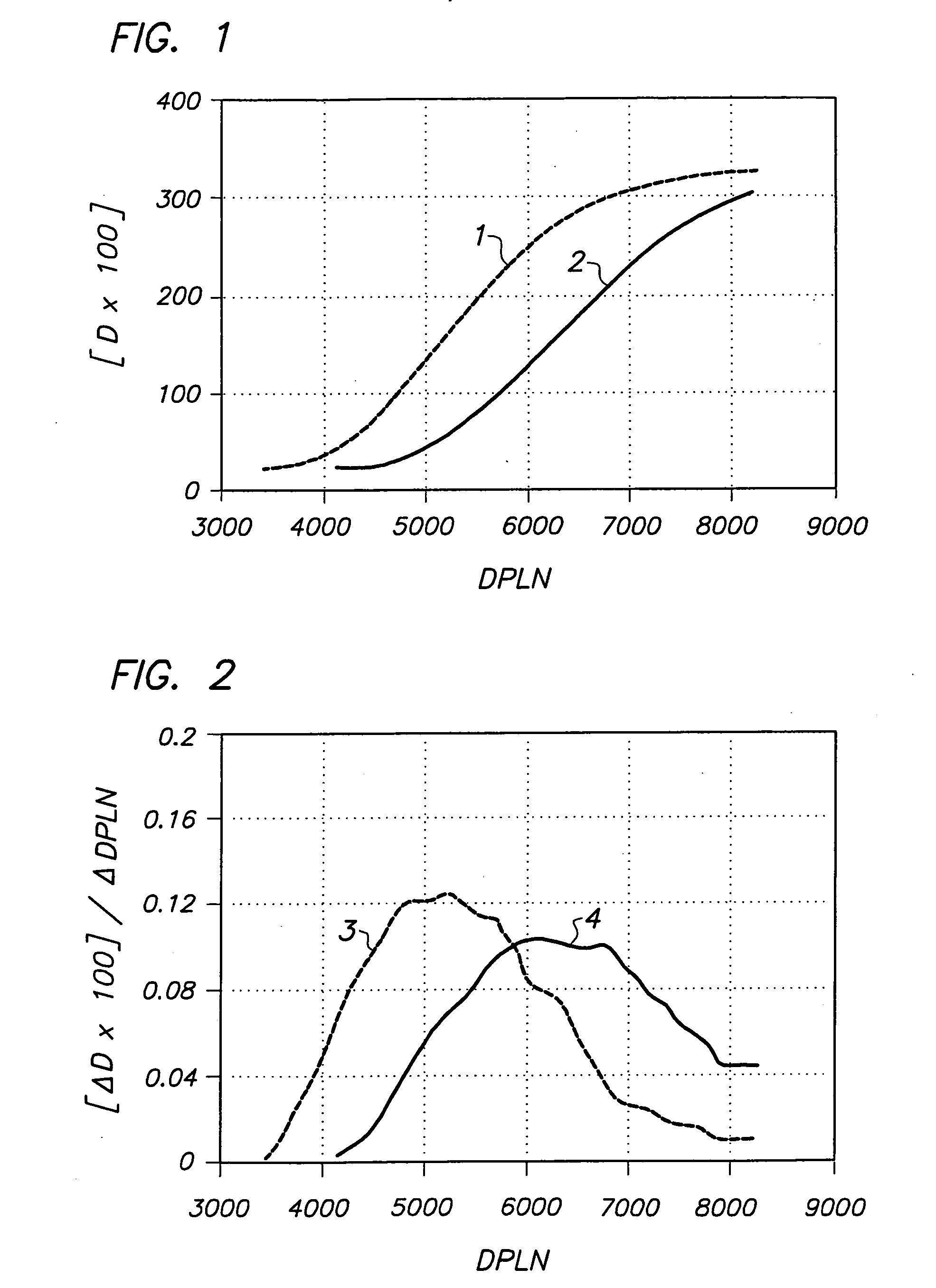Thermal head printer and process for printing substantially light-insensitive recording materials
- Summary
- Abstract
- Description
- Claims
- Application Information
AI Technical Summary
Benefits of technology
Problems solved by technology
Method used
Image
Examples
invention example 1
[0107] Four step-wedges were simultaneously printed with the type 1 substantially light-insensitive thermographic material in an environment with a temperature of 25.degree. C. and a relative humidity of 50% relative humidity with a DRYSTAR.TM. 4500 M printer with a line time of 7 ms from AGFA-GEVAERT N.V. consisting each of 13 areas 4 mm in width and ca. 200 mm in length along the transport direction of the printer with a maximum power level of 38.2 mW. Each of the 52 areas was printed at a different DPLN from a total number of 13 bit (8192) with each of the 13 areas covering the whole DPLN range. The optical densities were measured with a built in dynamic transmission densitometer with a spot size of 0.6 mm by taking the average of 10 measurements. The densitometer scanned over the areas at substantially 90.degree. to the transport direction with the substantially light-insensitive thermographic material stationary. The four sets of print density-DPLN data were combined into a sin...
invention example 2
[0110] Four step-wedges were simultaneously printed with the type 2 substantially light-insensitive thermographic material in an environment with a temperature of 25.degree. C. and a relative humidity of 50% relative humidity with a DRYSTAR.TM. 4500 printer with a line time of 7 ms from AGFA-GEVAERT N.V. consisting each of 13 areas 4 mm in width and ca. 200 mm in length along the transport direction of the printer with a maximum power level of 47.6 mW. Each of the 52 areas was printed at a different DPLN from a total number of 13 bit (8192) with each of the 13 areas covering the whole DPLN range. The optical densities were measured with a built in dynamic transmission densitometer with a spot size of 0.6 mm by taking the average of 10 measurements. The densitometer scanned over the areas at an angle of substantially 90.degree. to the transport direction with the substantially light-insensitive thermographic material stationary. The four sets of print density-DPLN data were combined ...
invention example 3
[0113] Two step-wedges consisting each of 16 areas, 337 mm in width and ca. 9.5 mm in length along the transport direction of the printer were simultaneously printed on the type 1 substantially light-insensitive thermographic material at a temperature of 25.degree. C. and a relative humidity of 50% with a DRYSTAR.TM. 5300 printer from AGFA-GEVAERT N.V. with a maximum power level of 62.4 mW and a line time of 8,35 ms. Each of the 32 areas was printed at a different DPLN from a total number of 13 bit (8192) with the 16 areas covering the whole DPLN range. The optical densities were measured with a built-in static transmission densitometer with a spot size of 30.times.70 mm by taking the average of 13 measurements. The densitometer scanned over the areas in the transport direction while the substantially light-insensitive thermographic material moved to the output tray. The two sets of print density-DPLN data were combined into a single smoothed master curve and the dependence of slope...
PUM
 Login to View More
Login to View More Abstract
Description
Claims
Application Information
 Login to View More
Login to View More - R&D
- Intellectual Property
- Life Sciences
- Materials
- Tech Scout
- Unparalleled Data Quality
- Higher Quality Content
- 60% Fewer Hallucinations
Browse by: Latest US Patents, China's latest patents, Technical Efficacy Thesaurus, Application Domain, Technology Topic, Popular Technical Reports.
© 2025 PatSnap. All rights reserved.Legal|Privacy policy|Modern Slavery Act Transparency Statement|Sitemap|About US| Contact US: help@patsnap.com



